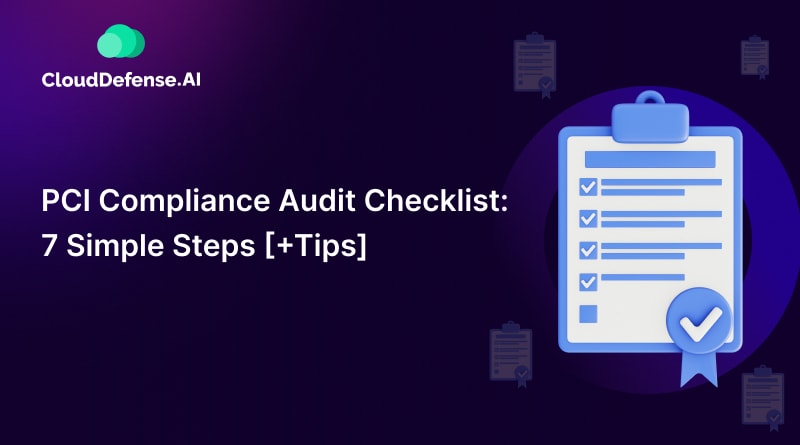Managing card payments demands strict adherence to PCI DSS standards. While conducting PCI audits may seem challenging with 400 controls, it is imperative for ensuring the security of cardholder data. In this article, Barbara Ericson breaks down the PCI audit process, emphasizing its importance, compliance levels, and fundamental requirements.
Understanding PCI Compliance Audit:
PCI compliance audits evaluate an organization's adherence to PCI DSS, ensuring robust security measures for the protection of cardholder data. The article underscores that completing these audits is not only crucial for customer trust but also beneficial for maintaining a company's reputation.
PCI DSS Compliance Levels:
The author outlines four compliance levels for both merchants and service providers, each requiring specific assessments and documentation based on the volume of transactions processed annually.
Importance of PCI Audit Process:
Highlighting the significance of the PCI audit process, the article notes that it identifies vulnerabilities, reduces data breach risks, and builds customer trust. Compliance also meets legal requirements and enhances industry reputation, making successful audits essential for business relationships.
PCI DSS Audit Requirements: 12 Fundamental Requirements:
PCI DSS sets forth a comprehensive framework of 12 technical and operational requirements that organizations must follow to attain PCI compliance. These mandates are crafted to safeguard cardholder data and uphold a secure environment. Let's delve into each requirement:
1. Firewall Configuration: Establish and maintain robust firewalls for cardholder data protection.
2. No Default Passwords: Avoid using default passwords and security parameters; enhance overall security.
3. Protect Stored Cardholder Data: Apply encryption, truncation, masking, or hashing to secure stored data effectively.
4. Encrypt Cardholder Data Transmission: Use encryption protocols during transmission to prevent unauthorized access.
5. Malware Protection: Safeguard systems against malware with updated anti-virus software and robust protection measures.
6. Secure Systems and Applications: Conduct regular vulnerability assessments and penetration testing to address security weaknesses.
7. Restrict Access to Cardholder Data: Limit access to individuals whose jobs require it, enhancing data security.
8. Identify and Verify Access: Assign unique IDs for system access, ensuring accountability and secure access.
9. Restrict Physical Access: Control physical access to systems hosting cardholder data to prevent unauthorized entry.
10. Monitor Network Access: Actively monitor and log all network resources and cardholder data access for timely threat detection and response.
11. Regularly Test Security Systems: Conduct regular assessments of security systems to identify and address vulnerabilities, ensuring ongoing effectiveness.
12. Maintain Information Security Policies: Establish and uphold comprehensive information security policies for all personnel, fostering a secure operational environment.
PCI Compliance Audit Checklist: Key to Expediting PCI:
The provided PCI compliance audit checklist offers seven key steps for a smooth audit process. These steps cover areas such as system configuration, encryption, secure systems, access controls, monitoring, testing, and policy establishment.
How Does a PCI DSS Audit Work?
A simplified overview of the PCI audit process is outlined, covering steps from determining the scope to submitting reports, including the Self-Assessment Questionnaire (SAQ), Report on Compliance (RoC), and Attestation of Compliance (AoC).
7 Tips for Preparing PCI Compliance Audit:
To assist organizations in preparing for PCI audits, the article offers seven tips. These include:
1. Stay Updated with PCI Standards: Keep abreast of evolving PCI DSS regulations, including the latest standard PCI v4.0 (until 2025).
2. Conduct a Risk Assessment: Analyze risks associated with stored cardholder data to pinpoint vulnerabilities.
3. Identify and Plan the Audit Scope: Identify the audit scope before undergoing the process, considering factors like location, applications, vendors, and services.
4. Ensure Robust Network Security: Implement comprehensive network security measures aligned with PCI DSS requirements.
5. Monitor User Activity: Regularly monitor user activities to maintain a secure environment and protect sensitive information.
6. Verify Third-party Vendor Compliance: Assess the PCI compliance of third-party service providers to mitigate data breach risks.
7. Train Employees: Once essential controls are in place, train employees on password protection, recognizing malicious activities, and maintaining a security-aware culture.
The Future of PCI DSS: Prepare for PCI 4.0:
Looking ahead, the article advises companies to prepare for PCI DSS 4.0, emphasizing the importance of staying informed about updated requirements, conducting risk assessments, and ensuring staff familiarity with the new standards.
Conclusion:
In conclusion, the article underscores the necessity of PCI DSS compliance audits for enterprises handling payment card data. It emphasizes the importance of implementing security controls, policies, employee training, and collaboration with auditors to streamline the PCI DSS audit process.







Top comments (0)